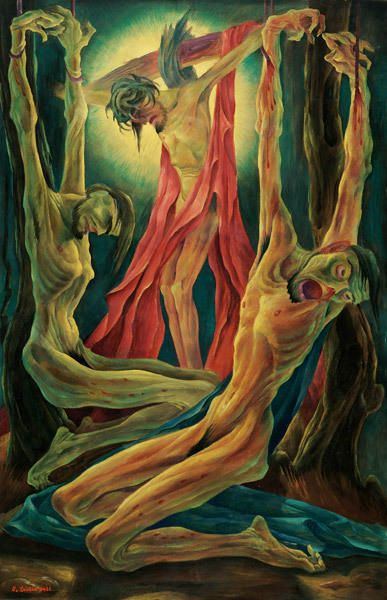Magic Realism: Art in Weimar Germany 1919-33
- Georgia Massie-Taylor
- Oct 13, 2018
- 3 min read
Tate Modern 30 JULY 2018 – 14 JULY 2019 Free
The term magic realism was invented by German photographer, art historian and art critic Franz Roh in 1925 to describe modern realist paintings with fantasy or dream-like subjects. The exhibition shows disturbing works, with themes around degeneration, violence, sexual exploitation and poverty. The Nazi’s were particularly opposed to modern art at the time, due to the degenerative themes and harrowing content, which is still shocking today.

Works by the ever-brilliant Otto Dix are included, as well as George Grosz, Albert Birkle and Jeanna Mammen. The realism these works display was important for the times, given the growing political extremism during the Nazi era. November 1918 saw the end of the First World War and the collapse of the German Empire. Many of the artists in the exhibition were scarred by their experience of the wartime trenches, and most of the work here could be understood as post-traumatic explorations.
One artist whose work is a direct product of his experience of war is Otto Dix. Dix has a rough yet tailored artistic flair, which gives his illustrations and painting a playful gloom. An example of this is his 1922 watercolour, titled ‘Lustmord’ (Lust Murder). The work depicts a demonically enthused man in a checked suit, proudly holding up the leg of his victim as if it were a trophy. Female body parts are splayed around the rest of the image, pouring with blood and gore and adding to the abysmal darkness.

Sexualized murder was a recurrent theme within this period: the exhibition holding a number of other works similar to the piece by Dix. An example is Rudolf Schlichter’s ‘The Artist with Two Hanged Women’ watercolour. Schlichter was known to have sexual fantasies revolved around hanging, as well as an obsession with women’s buttoned boots. Acting as a self-portrait, the image represents Schlichter’s private fantasies, whilst also drawing upon the public issues of suicide, which saw an unsettling rise during this period.

After the turbulence and uncertainty of the post-war years, Germany found more stability in the years that followed. Despite this, degeneration, death and decline were still strong themes explored by the realists. Herbert Gurschner’s 1928 Oil painting entitled ‘Lazarus’ depicts a scene from the Bible, in which Jesus brings a man back to life. However, instead of this being represented in a miraculous and positive light, the overall feeling we take from the image is one of pain, death and disease. The man pictured is a sickly green tone, whilst still strongly resembling a human. This brings up images of Mary Shelley’s Frankenstein and reminds viewers of the uncanny, making them feel instantly uneasy and deterred from the subject matter.

The ghostly portrayal of religion continues in this room of the exhibition, with Albert Birkle’s ‘Crucifixion’ particularly noteworthy. Alike to Dix, Birkle had experienced the particular and indescribable horrors of war and was most likely a very scarred and traumatised young man at the time of paining this. In the oil painting, starving bodies and ghastly faces hang limply from the trees and platforms they are attached to. The colour scheme revolves around pale greens, deep blues and red: reminding one of illness, death and danger. The faces are pulled into various pained contortions, one appears to be screaming behind inhumane and emotionless eyes. A truly magnificent but truly harrowing piece of art, which Birkle painted at the tender age of 21.

The work included here was like nothing I have seen in the flesh before. It was effective and informative: depicting a troubled Germany which was filled with despair, desolation and death. A definite must-see as the works are not only excellently executed, but emotionally emblematic.
OVERALL RATING: *****
https://www.tate.org.uk/whats-on/tate-modern/exhibition/magic-realism




















Comments